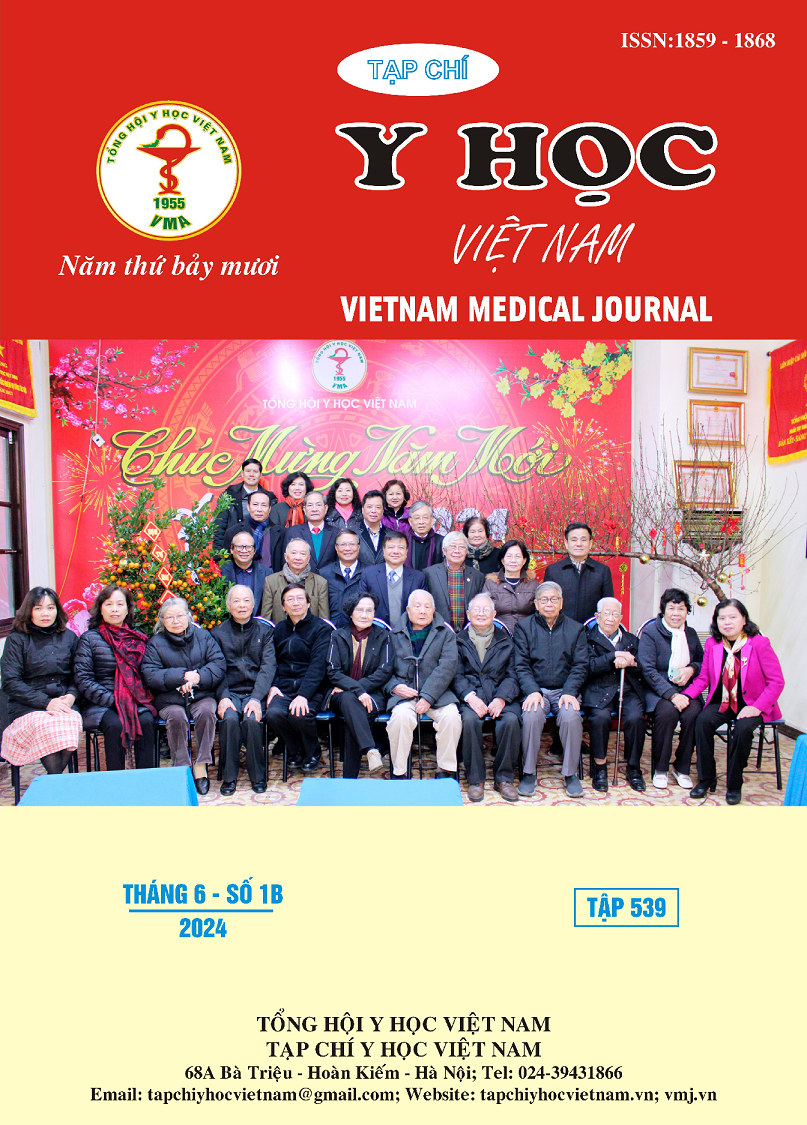CURRENT SITUATION OF USING ANTIBIOTIC PROPHYLAXIS IN PEDIATRIC SURGERY AT NGHE AN OBSTETRICS AND PEDIATRICS HOSPITAL
Main Article Content
Abstract
Objective: Survey on the use of antibiotic prophylaxis in pediatric surgery at Nghe An Obstetrics and Pediatrics Hospital in 2023. Subjects and methods: Patients received clean surgical intervention and clean-contaminated surgery according to the standards of the Ministry of Health, designed to describe and analyze retrospectively on 387 medical records of patients at the Department of General Surgery and Orthopedics. Results: The median age is 45 months old. Men account for 84.8%. Classification of clean surgery accounts for 68.7%, clean surgery accounts for 31.3%. Surgery time takes place under 2 hours accounting for 92.0%, from 2 hours to 4 hours accounting for 7.0%, and lasting over 4 hours accounting for 1.0%. No patient was recorded with surgical wound infection. The cephalosporin group is the most used, accounting for 98.72%. The rate of using single regimen is 97.68%, of which cafalothin is the most used, accounting for 86.30%. The time of using prophylactic antibiotics before surgery is from 30 minutes to 60 minutes, which is 85.27%. In 99.74% of cases, drugs were administered intravenously. There were no cases of additional doses of prophylactic antibiotics during surgery. The majority of prophylactic antibiotic use lasts longer than 24 hours after surgery, accounting for 91.73%. Conclusion: Antibiotic program in surgical surgery at Nghe An Obstetrics and Pediatrics Hospital successfully minimize post-op infections.
Article Details
Keywords
Prophylactic antibiotics, surgical site infections, pediatric surgery.
References
2. World Health Organization. Global guidelines for the prevention of surgical site infection: World Health Organization; 2016.
3. K Morikane, PL Russo, KY Lee, M Chakravarthy, ML Ling, E Saguil, et al. 2021. Expert commentary on the challenges and opportunities for surgical site infection prevention through implementation of evidence-based guidelines in the Asia–Pacific Region. Antimicrobial Resistance & Infection Control. 10(1):1-10.
4. JM Badia, AL Casey, N Petrosillo, PM Hudson, SA Mitchell, C Crosby. 2017. Impact of surgical site infection on healthcare costs and patient outcomes: a systematic review in six European countries. Journal of Hospital Infection. 96(1):1-15.
5. Trần Đình Bình, Nguyễn Viết Tứ, Trần Doãn Hiếu, Hoàng Lê Bích Ngọc, Dương Thị Hồng Liên. 2022. Đánh giá tình hình nhiễm khuẩn vết mổ và sử dụng kháng sinh dự phòng tại các khoa ngoại, Bệnh viện Trường Đại học Y dược Huế năm 2020. Tạp chí Y Dược học Cần Thơ. (45):103-11.
6. Dale W Bratzler, E Patchen Dellinger, Keith M Olsen, Trish M Perl, Paul G Auwaerter, Maureen K Bolon, et al. 2013. Clinical practice guidelines for antimicrobial prophylaxis in surgery. Surgical infections. 14(1):73-156.
7. Tugba Bedir Demirdag, Burcu Ceylan Cura Yayla, Hasan Tezer, Anıl Tapısız. 2020. Antimicrobial surgical prophylaxis: Still an issue in paediatrics. Journal of Global Antimicrobial Resistance. 23:224-7.
8. S. J. Rangel, M. Fung, D. A. Graham, L. Ma, C. P. Nelson, T. J. Sandora. 2011. Recent trends in the use of antibiotic prophylaxis in pediatric surgery. J Pediatr Surg. 46(2):366-71.
9. A. Dimopoulou, Papanikolaou, Z., Kourlaba, G., Kopsidas, I., Coffin, S., & Zaoutis, T. 2014. Surgical Site Infections and Compliance with Perioperative Antimicrobial Prophylaxis in Greek Children. Infection Control & Hospital Epidemiology. 35(11):1425-7.
10. D. A. Goldmann, R. A. Weinstein, R. P. Wenzel, O. C. Tablan, R. J. Duma, R. P. Gaynes, et al. 1996. Strategies to Prevent and Control the Emergence and Spread of Antimicrobial-Resistant Microorganisms in Hospitals. A challenge to hospital leadership. Jama. 275(3):234-40.


